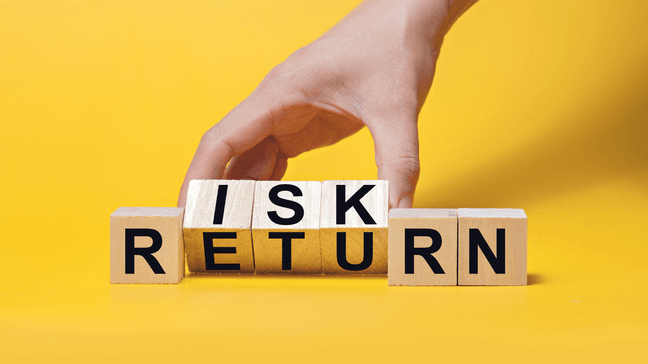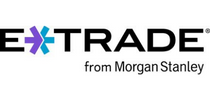Which would you prefer: $2,500 in cash, or a 50% chance to win $10,000?
Your answer reveals something very important about your risk tolerance.
If you chose the safe route of $2,500 cash, you might have a low risk tolerance. In this scenario, you preferred the comfort of guaranteed results, even if it meant losing the chance to win much more money.
If you chose the coin flip for $10,000, you might have a high risk tolerance. In this scenario, you could accept the risk of winning nothing for the chance of massive gains.
Understanding your personal risk tolerance helps you make better investing decisions faster. But what exactly is risk tolerance, and what factors into it? How does it improve your investing decisions? And most importantly, how can you assess something that’s seemingly pretty vague and qualitative in nature?
Let’s investigate risk tolerance together.
What’s Ahead:
Take our quiz to help determine your risk tolerance!
What is risk tolerance?

Risk tolerance is your financial and emotional ability to withstand a loss in your investment portfolio.
Wait, shouldn’t investing be a purely logical and financial decision? Well, emotions play a big role in successful investing as well, because you need to be both financially and emotionally ready to take on risk. If not, you may find yourself at a major risk for investment burnout and disappointment.
Here’s an example of someone being emotionally ready to take on risk, but not financially ready:
- Dave is $30,000 in debt, but he soon inherits $30,000. He should pay off his debt, but he’s feeling lucky, so he instead tries to double his money by investing in TSLA near its peak for $1,000 per share. Soon, TSLA drops to $487. Dave’s $30,000 investment has lost over half of its value, and his debt is accruing interest.
Dave is an example of someone whose risk tolerance is a little too high. He felt comfortable investing all of his inheritance (badly) and lost most of it as a result.
What about an example of someone who’s financially ready to take on risk, but not emotionally ready?
- Aaliyah has a $300,000 net worth and inherits $30,000. Since she has such a healthy cushion, she’d be wise to invest her $30,000. However, Aaliyah is new to investing and gets nervous. She deposits her $30,000 in her checking account, where it sits for years. Without any way to accrue significant interest, her $30,000 inheritance loses value year over year due to inflation.
Aaliyah had a safe cushion and certainly the financial ability to take on risk in her portfolio. However, she felt too nervous to invest, and instead let her inheritance sit in her checking account when it should be accruing at least a trickle of interest as an investment.
Therefore, Aaliyah is an example of someone whose risk tolerance is a little too low. She was financially ready, but not emotionally ready, and missed out on lucrative investment opportunities as a result.
Your risk tolerance should be right in the goldilocks zone: not too high, not too low. To build on Aaliyah’s example a little more, it’s a fallacy to think that your money is safe in your checking account because of something called your risk capacity, which is sometimes more important than your tolerance.
What is risk capacity?
Your risk tolerance is a personal choice. You get to decide where, between “risk nothing” and “risk it all,” your preferences fall (ideally in the middle 50%).
Risk capacity, on the other hand, is not up to you. Your risk capacity is the amount of risk you need to have in your portfolio in order to meet your financial goals.
For example, if you make $30,000 annually and want to retire with $5 million, you’ll need to make some high-risk, high-reward investments, or your money will never multiply that much. Your risk capacity will have to be pretty high.
In short, your risk capacity is the minimum risk tolerance you need to meet your financial goals. If your risk capacity exceeds your risk tolerance, you may need to establish some more realistic financial goals or find ways to increase your income.
What factors define your risk tolerance?

In an earlier section, I covered how your risk tolerance is a combination of your financial and emotional ability to accept risk in your portfolio. Before taking the assessment, let’s further break down what specific factors drive these two pillars:
Financial factors of risk tolerance
Age
If you’re reading this, you’re probably under 35 and have plenty of income-earning years ahead of you. Therefore you can afford a few years of ups and downs and still come out on top. Someone in their 50s will need to be much more careful.
Status
If you’re single and only need to provide for yourself, you can probably tolerate more risk than a provider for five kids!
Capital – The more you have, the more you can afford to lose. Someone with a net worth of $500,000 can have a higher risk tolerance than someone with $5,000.
Goals
If you have lofty goals, like owning a five-bedroom house and a Ferrari by age 50, your risk tolerance will need to be much higher than someone who simply aspires to a two-bedroom and a Toyota.
Timeline
Timeline isn’t quite the same as age. You may have interim financial goals well before retirement, such as paying off student loans or buying a house, that drive up your risk capacity.
Emotional factors of risk tolerance
Personal comfort level
Although this is the only factor of risk tolerance that falls under the “emotional” category, its importance can’t be understated. How are you going to make money in your sleep if you can’t sleep at night?
The whole point of investing is to build a more comfortable life. If your investment strategy is so aggressive that it’s causing you stress, well, that kinda defeats the point, doesn’t it?
A family friend of ours is famous for making a lot of Atlantans gobs of money in the 90s. His “secret” was to push his clients well past their comfort zone, pressuring them to pour money into high-risk, high-reward investments. He was such a good investor that they all worked out, but “it still wasn’t worth it.” By the 2000s, he’d realized that he and his clients had aged 20 years with stress; years that no pile of money could ever give them back.
His advice today is to “invest wisely and within your comfort level.”
How will your risk tolerance change over time?
Major life events and shifting priorities can and should change your risk tolerance.
For example, having a child may increase or decrease your risk tolerance. You may choose to increase your risk tolerance so your investments pay off more quickly and you can afford a larger home. Alternatively, you may choose to dial back your risk tolerance to start a stable, 18-year college fund.
You may not always be aware of when your risk tolerance has shifted. Once the dust settles on a major life event, planned or unplanned, consider returning to this article to reassess your risk tolerance.
How does risk tolerance affect your investing strategy?

Your risk tolerance will dictate your portfolio mix of low, medium, and high-risk investments. If you’re low- to medium-risk, for example, you might want to invest most of your capital in stable, low-risk investments, a smaller chunk in medium-risk investments, and toss a few bucks in the high-risk areas just for fun.
Low-risk investments
- Government bonds.
- Conservative mutual funds and ETFs.
Medium-risk investments
- Residential or commercial real estate.
- High-income bonds.
High-risk investments
- Individual stocks and IPOs.
- Cryptocurrency.
This is just a simple list to give you an idea of what low, medium, and high-risk investments look like. Again, having a low-risk tolerance doesn’t pigeonhole you into the low-risk category. It just means that you should have the bulk of your investments there, with maybe 20% in the medium-risk category and <10% in high-risk.
How and where should you start investing?
Regardless of whether your risk tolerance is super high or super low, it’s a good idea to invest at least $50 into the stock market; even if it disappears, it’s still worth it.
That’s because $50 is a small investment to make, and the benefits pay for themselves. First, you learn more about investing and become familiar with what tools are available to you. Plus, a little amateur investing in your 20s and 30s is a great way to become comfortable with the process and increase your risk tolerance later if and when it suits you.
But where should you start?
Robinhood
 Robinhood is a superb starting point for new and growing investors. Equal parts school and playground, Robinhood has a pretty unrivaled learning library so you can learn all about the trade (no pun intended) as you progress in your investing journey.
Robinhood is a superb starting point for new and growing investors. Equal parts school and playground, Robinhood has a pretty unrivaled learning library so you can learn all about the trade (no pun intended) as you progress in your investing journey.
I’ve you’ve ever felt intimidated by ticker tapes and complex user interfaces, you should know that it’s easier to purchase stocks through Robinhood than it is to purchase socks through Amazon. Simply navigate to a stock and select “invest.”
E*TRADE
 Thanks to advanced features and human support, E*TRADE is rapidly becoming the trading platform of choice for experienced to advanced traders.
Thanks to advanced features and human support, E*TRADE is rapidly becoming the trading platform of choice for experienced to advanced traders.
E*TRADE offers so many options and features that it can be intimidating to newcomers but a veritable investors’ candy shop for traders ready for more. The experienced platform offers foreign and domestic stocks and ETFs, multiple investment account options, countless ways to monitor and manage your portfolio, even crypto trading.
Public
As the name implies, Public is the social trading app. If you like the idea of learning and trading alongside your friends versus alone, Public is the app for you.
Public’s social features begin at signup; if you get a referral code from a friend, or send one yourself, you’ll get some free shares valued up to $50 just for signing up. Once inside, Public offers a chat and messaging feature, connecting you to a community of investors for inspiration and guidance.
Summary
Understanding your risk tolerance will help you make better investments faster and more comfortably. Your investments should be well-researched and adequately risky, but at the same time, fall within your comfort level. Nobody should lose sleep at night wondering if your new venture will pay off.
Keep in mind also that your risk tolerance may change over time. If you increase your income, get married, or have a baby, your financial priorities will shift and your risk tolerance with it. So be sure to return to this piece after a major milestone to reassess your risk tolerance, and adjust your investment strategy and portfolio accordingly.
As a financial wizard once told me, invest wisely and within your comfort level.



